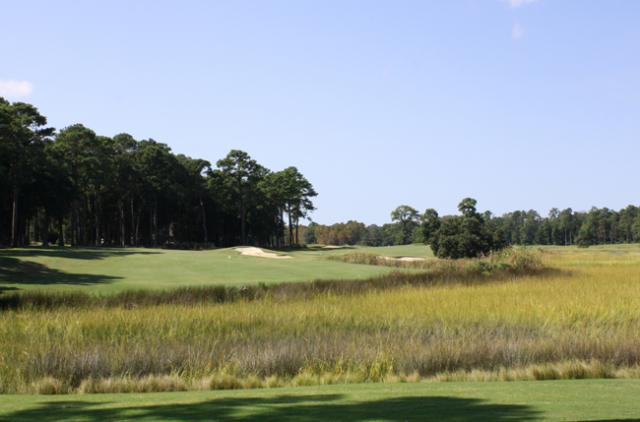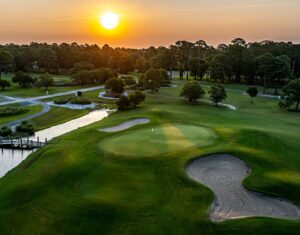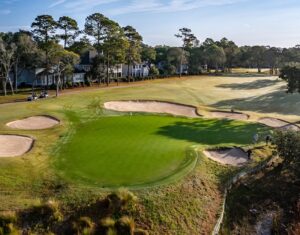Myrtle Beach Golf Course Ratings: Great Views, Great Golf at Oyster Bay

Oyster Bay, along with the since closed Marsh Harbour, paved the way for the expansion of the Myrtle Beach golf market into neighboring Brunswick County, North Carolina, and did so in spectacular fashion. Oyster Bay is among the area’s most visually stimulating courses, and the Dan Maples design is universally recognized for its quality.
Named Best New Course in America upon its 1983 opening, Oyster Bay has only improved with maturity, and the reasons for its popularity are many.
The course meets criteria number one for many traveling golfers – it’s memorable. Three holes play along the Calabash River, water comes into play on 15 of 18 holes, and it has a pair of island green par 3s.
Oyster Bay is more than beauty. Maples’ design work is a case study in classic architecture, hence the course is ranked No. 15 in the state of North Carolina by Golf Magazine and is a 4.5-star layout, according to Golf Digest.
With its relatively narrow fairways and small greens, the challenge at Oyster Bay isn’t in its length. The course challenges players to think, and the keys to success are more subtle than just bludgeoning a drive.
Risk-reward opportunities are everywhere, particularly on the short, par 4 13th hole. Playing just 330 yards from the back tees (276 yards from the whites), there is the possibility of driving the green but danger lurks. A cavernous bunker fronts the green and water runs up the right side, meaning the chances of trouble are at least as great as your shot at glory.
But that’s what makes the course fun.
Even more than the risk-reward holes, the two island greens provide the take home memories. The first, at No. 15, is the easier of the two challenges. It plays 210 yards from the back tees but drops to a manageable 135 yards from the next set of tees. There is ample room to land the ball and even a little margin for error to the left, which is helpful with the prevailing wind coming in from the right.
The tee shot on the 17th hole is among the most knee-knocking on the Grand Strand. Playing 165 yards from the tips, the green, which is ringed by oyster shells, is small and, beyond two bunkers in the back, offers no bailout room. Throw in a surplus of alligators in the water surrounding the green and it’s one of the most memorable holes on the Myrtle Beach golf scene.
Oyster Bay’s three par 5s are an outstanding collection of holes, including the fifth and ninth, which play along the river. The 14th hole, with a tree-planted in the middle of the fairway, forces players to make a decision off the tee – go left, right or over the tree. Most aren’t long enough to hit it over, so play it left if you can.
While Oyster Bay’s tree-lined fairways reward precision, the biggest test are the course’s small, undulating greens. Make sure you have the flat-stick tuned up before heading to the first tee.
The yardage at Oyster Bay – 6,685 yards from the tips – doesn’t appear daunting on the scorecard, but beware. The layout is a par 70, so the course offers plenty of challenge to long hitters.
The Verdict: Great course. Oyster Bay is challenging, memorable and fun to play. It’s among the upper echelon of Grand Strand golf courses and if it’s part of your next Myrtle Beach golf trip, send your group leader a thank you in advance.



